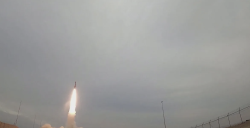Iran plane crash: What we know about flight PS752
- 2020-01-10 14:46:30


 Pierre Rayer: Art, Science, and Happiness: The Universal Mission of Transmission to Future Generations through Patronage at the Louvre Abu Dhabi
Pierre Rayer: Art, Science, and Happiness: The Universal Mission of Transmission to Future Generations through Patronage at the Louvre Abu Dhabi Ahly crowned Super champions after dramatic extra-time win over Modern Future FC
Ahly crowned Super champions after dramatic extra-time win over Modern Future FC Yemeni Honey..A Development Wealth Threatened By Conflict And Climate Change
Yemeni Honey..A Development Wealth Threatened By Conflict And Climate Change California wildfires: Millions warned of possible power cut
California wildfires: Millions warned of possible power cut Central African rebels launch attacks near capital
Central African rebels launch attacks near capital Saudi Arabia and Iran Meet in Tehran, With China’s Mediation, to Support Comprehensive Political Solution in Yemen Under UN Supervision
Saudi Arabia and Iran Meet in Tehran, With China’s Mediation, to Support Comprehensive Political Solution in Yemen Under UN Supervision Escalation in U.S.: Florida Declares Muslim Brotherhood and CAIR Terrorist Entities
Escalation in U.S.: Florida Declares Muslim Brotherhood and CAIR Terrorist Entities Iran and Saudi Arabia advance Beijing agreement in new trilateral talks
Iran and Saudi Arabia advance Beijing agreement in new trilateral talks US to allow Nvidia H200 chip shipments to China, Trump says
US to allow Nvidia H200 chip shipments to China, Trump says Iran has resumed large-scale ballistic missile production, IDF warns Knesset
Iran has resumed large-scale ballistic missile production, IDF warns Knesset
